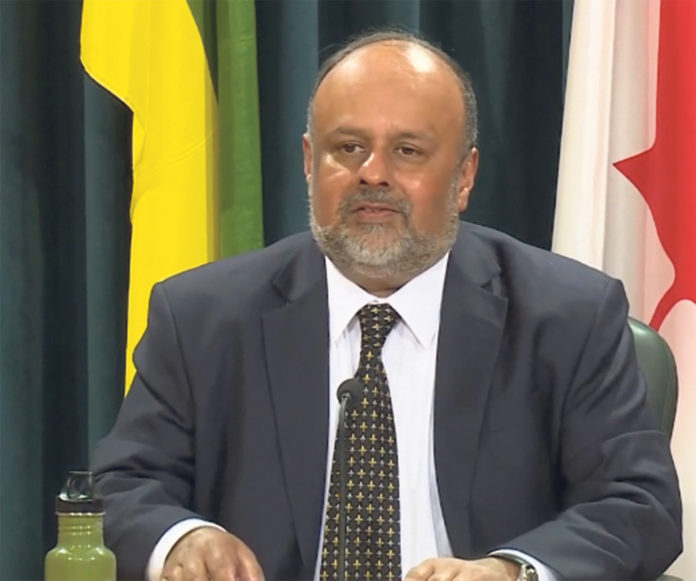
Saskatchewan’s Chief Medical Health Officer is imploring people to be kind to one another as the COVID-19 pandemic continues.
Small spikes, or clusters like the one detected recently in the Prince Albert area, will continue until there is a vaccine or other treatment, experts have said.
That means small clusters will continue to pop up, and those who test positive for COVID-19 shouldn’t be named and shamed, Dr. Saqib Shahab said Thursday.
“Business owners shouldn’t feel stigmatized that their name is used in a public service announcement. A community shouldn’t be concerned if they’ve been identified with an outbreak,” he said.
“COVID is nobody’s fault and it will happen to many of us as we’re out and about.”
The reality is, Shahab said, many people will be exposed to the virus. The intent is to slow the spread and protect the vulnerable, not eliminate the virus altogether.
He said it’s important to remember that if a business has been the site of a potential exposure, it doesn’t mean that the business is unsafe. It’s intended instead to inform anyone who might have been there to watch for their own symptoms.
“We need to be calm about it, not stigmatize or point fingers at each other because this will continue for the next several months,” he said, adding that it should become as normal as if there’s an E. Coli or Measles outbreak in a community.
“We need to take it in stride and accept it as something routine.”
The virus can have serious consequences for the vulnerable, he said, “but it should not be a source of stigma for a business operator, an individual or a community.”
People from all walks of life from across the province have become ill from COVID-19 Shahab explained as he walked through Saskatchewan’s latest data during Thursday’s press conference.
While Saskatchewan has a higher number of cases than average in younger age groups, a lot of that is due to aggressive case contact tracing investigations that occurred during outbreaks in the northwest.
People in all age groups are affected, he said, “but if you’re older you’re more likely to get really ill.”
That doesn’t mean younger people won’t get sick, though. A resident from the north region in their 20s was declared deceased after a COVID-19 diagnosis earlier this week.
According to data presented by Shahab in a slideshow Thursday, so far, there have been two residents aged 19 or younger hospitalized. Three residents in the 20-39 age group have been sent to the ICU, out of seven total hospitalizations in the age group. While older adults are disproportionately affected by the severity of the illness and are represented in the majority of Saskatchewan deaths attributed to COVID-19, there have been more ICU admissions among Saskatchewan residents 60 or younger than those aged 60-plus.
So far, 15 people have been put on ventilators, including two patients in the 20-39 age range, six aged 40-59, four in the 60-69 age group and three aged 70-79.
Risk factors for COVID-19 cases include hypertension (25 per cent), diabetes (about 17 per cent), lung disease (about 14 per cent) and cardiac diseases (about 13 per cent). Other risk factors account for over 30 per cent of all cases.
The most common symptom so far has been a cough, present in about 60 per cent of positive cases. Fever, headache and sore throat are next, at 35, 30 and 29 per cent respectively, followed by a stuffy nose and muscle pain at 27 and 25 per cent. One-quarter of all positive tests have been in asymptomatic patients, Shahab’s slideshow indicated.
Other symptoms include GI symptoms such as diarrhea (20 per cent), lethargy, loss of smell and taste, shortness of breath and chills.
While underlying conditions contribute to the severity of the illness, “you can be perfectly healthy and still have a serious outcome,” Shahab said.
Still, most people recover from the illness. Saskatchewan’s fatality rate from COVID-19 is 1.8 per cent.
Shahab stressed that the most important thing for everyone in the province is to stay home if they’re sick, get tested if they have even mild symptoms and follow public health advice such as maintaining physical distancing and wearing masks where maintaining that distance is not possible.

